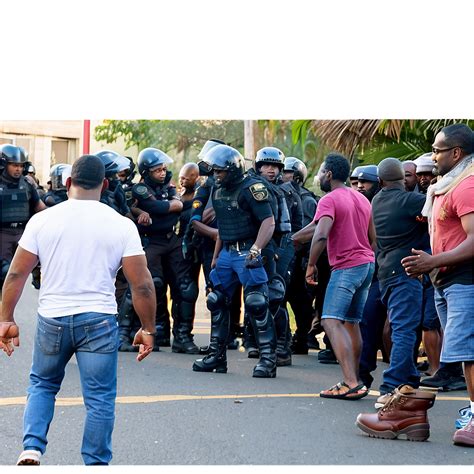
Federal law enforcement officers in tactical gear conducting operations in Minneapolis have ignited controversy and raised concerns among local residents and officials, prompting questions about transparency, jurisdiction, and the necessity of such a visible presence.
Minneapolis is grappling with the fallout from recent federal operations conducted by officers in tactical gear, sparking public outcry and demands for greater transparency. The presence of these officers, whose affiliations were initially unclear, has fueled anxieties and prompted inquiries from city officials seeking clarification on the scope and purpose of the federal activity.
The controversy began swirling after residents reported sightings of heavily armed individuals in tactical gear operating in various parts of the city. Social media platforms buzzed with images and videos of these officers, raising questions about their identity and mission. The lack of immediate official explanation contributed to the growing unease and fueled speculation about the federal government’s involvement in local law enforcement matters.
According to Minneapolis City Council Member Jamal Osman, neither he nor other city officials were informed beforehand about the federal operation. “I found out just like everyone else, on social media,” Osman stated, highlighting the lack of communication between federal agencies and local authorities. This lack of coordination has become a central point of contention, with city officials expressing concerns about the potential for miscommunication, escalation, and erosion of public trust.
The U.S. Marshals Service has since confirmed its involvement, stating that its officers were assisting in Operation North Star II, a nationwide initiative focused on combating violent crime. In a statement, the Marshals Service explained that the operation targeted individuals wanted for serious offenses, including homicide and aggravated assault. “The U.S. Marshals Service is committed to working with our local law enforcement partners to reduce violent crime and make our communities safer,” the statement read.
However, this explanation has done little to quell the concerns of residents and local leaders. Critics argue that the use of tactical gear and the lack of transparency surrounding the operation created an atmosphere of fear and intimidation, particularly in communities already grappling with issues of police brutality and racial bias.
The situation is further complicated by the history of strained relations between law enforcement and some communities in Minneapolis, particularly in the aftermath of the death of George Floyd in 2020. The visible presence of heavily armed federal officers has been interpreted by some as a heavy-handed approach that disregards local concerns and undermines efforts to build trust between law enforcement and the community.
Moreover, questions have been raised about the effectiveness of such operations in addressing the root causes of crime. Some community activists argue that a focus on prevention, intervention, and community-based solutions is more likely to yield long-term results than a reliance on aggressive law enforcement tactics.
The controversy surrounding the federal operation in Minneapolis underscores the complex challenges of balancing public safety with civil liberties, transparency, and community trust. As the situation unfolds, it is likely to continue to generate debate and scrutiny from local residents, elected officials, and civil rights advocates.
Further Details and Context
The unease in Minneapolis is deeply rooted in the city’s recent history. The murder of George Floyd by a Minneapolis police officer in May 2020 triggered widespread protests and a national reckoning on racial justice and police brutality. The city became a focal point for debates about police reform, accountability, and the role of law enforcement in communities of color.
In the wake of Floyd’s death, the Minneapolis City Council pledged to dismantle the city’s police department, a move that sparked both support and opposition. While the effort to completely abolish the police department ultimately failed, it led to significant changes in policing policies and practices, including a greater emphasis on de-escalation tactics, community engagement, and alternative responses to non-violent calls.
The arrival of federal officers in tactical gear has been seen by some as a step backward, signaling a return to more aggressive policing tactics that can disproportionately impact communities of color. Critics argue that the federal government’s involvement undermines the city’s efforts to implement police reform and build trust with residents.
The lack of communication between federal agencies and local authorities has also raised concerns about the potential for jurisdictional conflicts and unintended consequences. Without proper coordination, there is a risk that federal operations could interfere with local law enforcement efforts or create confusion among residents.
Minneapolis Mayor Jacob Frey expressed his concerns about the lack of prior notification and emphasized the importance of transparency in law enforcement operations. “It is imperative that our residents know who is operating in our city and why,” Frey stated, adding that he has reached out to federal officials to seek clarification and ensure greater coordination in the future.
The U.S. Marshals Service maintains that Operation North Star II is a legitimate and necessary effort to combat violent crime. The agency points to statistics showing a rise in homicides and other serious offenses in many cities across the country, including Minneapolis. The Marshals Service argues that its operations are targeted at individuals who pose a clear and present danger to the community.
However, critics question the effectiveness of such operations in addressing the root causes of crime. They argue that focusing solely on law enforcement tactics without addressing underlying issues such as poverty, inequality, and lack of opportunity is unlikely to produce lasting results.
Community activists have called for a more comprehensive approach to crime reduction that includes investments in education, job training, and mental health services. They argue that these types of interventions are more likely to prevent crime in the long run than simply arresting and incarcerating offenders.
The controversy in Minneapolis also highlights the broader debate about the role of the federal government in local law enforcement matters. While the federal government has the authority to investigate and prosecute federal crimes, some argue that it should defer to local authorities in most cases. They believe that local law enforcement agencies are better equipped to understand the needs and concerns of their communities and to implement strategies that are tailored to local conditions.
The situation in Minneapolis is likely to continue to evolve as more information becomes available and as local and federal officials work to address the concerns of residents. The outcome of this controversy could have significant implications for the future of policing and law enforcement in Minneapolis and other cities across the country.
The specific tactics employed by the federal officers have also come under scrutiny. The use of tactical gear, such as body armor, helmets, and assault rifles, has been criticized as being overly militaristic and intimidating. Some argue that these types of tactics can escalate tensions and create a sense of fear and distrust between law enforcement and the community.
The U.S. Marshals Service defends its use of tactical gear, arguing that it is necessary to protect the safety of its officers and the public. The agency maintains that its officers are trained to use force only when necessary and to de-escalate situations whenever possible.
However, critics argue that the mere presence of heavily armed officers can create a climate of fear and intimidation, particularly in communities that have a history of strained relations with law enforcement. They argue that alternative tactics, such as community policing and de-escalation training, are more likely to be effective in building trust and reducing crime.
The controversy in Minneapolis also raises questions about the accountability of federal law enforcement officers. Unlike local police officers, who are subject to local oversight and accountability mechanisms, federal officers are often shielded from public scrutiny. This lack of accountability can make it difficult to hold federal officers accountable for misconduct or abuse of power.
Community activists have called for greater transparency and accountability in federal law enforcement operations. They argue that federal agencies should be required to provide regular reports to local officials and the public about their activities in the city. They also call for the creation of an independent oversight body to investigate complaints of misconduct against federal officers.
The situation in Minneapolis is a complex and multifaceted one, with no easy solutions. It underscores the challenges of balancing public safety with civil liberties, transparency, and community trust. As the situation unfolds, it is likely to continue to generate debate and scrutiny from local residents, elected officials, and civil rights advocates.
Quotes
- Minneapolis City Council Member Jamal Osman: “I found out just like everyone else, on social media.”
- U.S. Marshals Service statement: “The U.S. Marshals Service is committed to working with our local law enforcement partners to reduce violent crime and make our communities safer.”
- Minneapolis Mayor Jacob Frey: “It is imperative that our residents know who is operating in our city and why.”
Frequently Asked Questions (FAQ)
1. Why were federal officers in tactical gear operating in Minneapolis?
Federal officers from the U.S. Marshals Service were in Minneapolis as part of Operation North Star II, a nationwide initiative aimed at combating violent crime. The operation targeted individuals wanted for serious offenses, including homicide and aggravated assault. According to the U.S. Marshals Service, their involvement was intended to assist local law enforcement partners in reducing violent crime and enhancing community safety.
2. Why weren’t local officials informed about the federal operation beforehand?
This is a central point of contention. City officials, including City Council Member Jamal Osman and Mayor Jacob Frey, have stated that they were not informed in advance about the federal operation. This lack of communication has raised concerns about transparency, coordination, and the potential for miscommunication or unintended consequences. Mayor Frey has stated that he has reached out to federal officials to seek clarification and ensure greater coordination in the future. While the U.S. Marshals Service often collaborates with local law enforcement, the level of pre-operation notification varies, and in this case, it appears to have been insufficient or absent, leading to the current controversy.
3. What concerns do residents have about the presence of federal officers in tactical gear?
Residents have expressed a range of concerns, including:
- Militarization of policing: The use of tactical gear is seen as overly aggressive and intimidating, particularly in light of the city’s history of police brutality and strained relations between law enforcement and communities of color.
- Lack of transparency: The initial lack of clarity about the identity and mission of the federal officers fueled anxieties and speculation.
- Erosion of trust: The operation is seen by some as undermining efforts to build trust between law enforcement and the community, particularly in the wake of George Floyd’s death.
- Potential for escalation: The presence of heavily armed officers is perceived as increasing the risk of confrontations and violence.
- Disproportionate impact on communities of color: There are concerns that the operation could disproportionately target and impact communities of color, further exacerbating existing inequalities.
4. What is Operation North Star II, and what are its goals?
Operation North Star II is a nationwide initiative led by the U.S. Marshals Service focused on combating violent crime. The operation targets individuals wanted for serious offenses, such as homicide, aggravated assault, and other violent felonies. The goals of the operation are to:
- Apprehend fugitives wanted for violent crimes.
- Reduce violent crime rates in participating cities.
- Work in collaboration with local law enforcement agencies to enhance community safety.
- Remove dangerous offenders from the streets.
The U.S. Marshals Service emphasizes that the operation is targeted and data-driven, focusing on individuals who pose a significant threat to public safety.
5. What are the potential long-term consequences of this situation for Minneapolis?
The controversy surrounding the federal operation in Minneapolis could have several long-term consequences:
- Increased distrust of law enforcement: The lack of transparency and the use of aggressive tactics could further erode trust between law enforcement and the community, making it more difficult to address crime and build positive relationships.
- Setback for police reform efforts: The operation could undermine the city’s efforts to implement police reform and create a more community-oriented approach to policing.
- Increased polarization: The controversy could further polarize the city, exacerbating existing divisions and making it more difficult to find common ground on issues related to public safety.
- Legal challenges: The operation could face legal challenges from civil rights organizations or individuals who believe their rights were violated.
- Impact on future federal-local partnerships: The controversy could make it more difficult for federal and local law enforcement agencies to collaborate effectively in the future.
- Shift in community engagement: The situation may catalyze increased community engagement and activism, with residents demanding greater transparency and accountability from law enforcement agencies. This could lead to the formation of new community groups or the strengthening of existing ones, advocating for policies that prioritize community-based solutions to crime and enhance public safety through non-punitive measures.
Extended Analysis
The incident in Minneapolis serves as a microcosm of a broader national debate regarding the appropriate role of federal law enforcement in local matters. It highlights the inherent tensions between the federal government’s responsibility to ensure public safety and the importance of respecting local autonomy and community concerns.
One of the central issues is the lack of transparency and communication. The failure to adequately inform local officials about the federal operation created a vacuum of information that was quickly filled by speculation and misinformation. This underscores the critical need for clear lines of communication and collaboration between federal and local agencies, especially when conducting operations that could impact local communities.
Furthermore, the use of tactical gear raises concerns about the potential for escalation and the impact on community perceptions of law enforcement. While the U.S. Marshals Service argues that such gear is necessary to protect officers and the public, critics contend that it can create an atmosphere of fear and intimidation, particularly in communities with a history of strained relations with law enforcement.
The situation also highlights the importance of addressing the root causes of crime. While law enforcement operations can be effective in apprehending offenders and reducing crime in the short term, they are unlikely to solve the underlying problems that contribute to criminal behavior. A more comprehensive approach is needed that includes investments in education, job training, mental health services, and other social programs.
The long-term consequences of the incident in Minneapolis will depend on how local and federal officials respond to the concerns of residents. A commitment to transparency, communication, and collaboration is essential to rebuilding trust and ensuring that future law enforcement operations are conducted in a way that respects community concerns and promotes public safety.
Moreover, there is a need for a broader national conversation about the appropriate role of federal law enforcement in local matters. This conversation should involve input from local officials, community leaders, civil rights advocates, and law enforcement experts. The goal should be to develop clear guidelines and protocols that ensure that federal law enforcement operations are conducted in a way that is both effective and respectful of local autonomy and community concerns.
The incident in Minneapolis serves as a reminder of the complex challenges of balancing public safety with civil liberties, transparency, and community trust. It underscores the need for ongoing dialogue and collaboration between law enforcement agencies, local officials, and community members to ensure that all residents feel safe and respected.
The absence of prior notification to local authorities also raises questions about the principles of federalism and the proper balance of power between the federal government and state and local governments. While the federal government has certain enumerated powers, including the authority to enforce federal laws, it is also expected to respect the sovereignty of state and local governments. By failing to adequately inform local officials about the operation, the U.S. Marshals Service may have overstepped its authority and undermined the principles of federalism.
In addition to the concerns about transparency and federalism, the incident in Minneapolis also raises questions about the effectiveness of Operation North Star II and similar initiatives. While the U.S. Marshals Service claims that these operations are effective in reducing violent crime, there is limited evidence to support this claim. Some studies have suggested that these types of operations can have unintended consequences, such as increasing community distrust of law enforcement and driving crime underground.
A more effective approach to reducing violent crime would involve a combination of targeted law enforcement efforts and community-based interventions. Targeted law enforcement efforts should focus on apprehending the most dangerous offenders and disrupting criminal networks. Community-based interventions should focus on addressing the root causes of crime, such as poverty, inequality, and lack of opportunity.
Ultimately, the success of any effort to reduce violent crime depends on building strong relationships between law enforcement agencies and the communities they serve. This requires transparency, communication, and a commitment to working collaboratively to address the needs and concerns of all residents.
The unfolding situation necessitates a thorough review of the protocols governing federal law enforcement operations within local jurisdictions. This review should encompass the following key areas:
- Notification Procedures: Establishing mandatory notification protocols requiring federal agencies to inform local officials, including mayors, city council members, and police chiefs, well in advance of planned operations. The notification should include detailed information about the operation’s objectives, scope, duration, and potential impact on the community.
- Coordination Mechanisms: Implementing formal coordination mechanisms to facilitate collaboration between federal and local law enforcement agencies. This could involve the creation of joint task forces, regular meetings between federal and local officials, and the development of shared strategies for addressing crime and public safety issues.
- Transparency Measures: Enhancing transparency by making information about federal law enforcement operations publicly available, while protecting sensitive information and ongoing investigations. This could involve issuing press releases, holding community meetings, and publishing data on the outcomes of federal operations.
- Oversight and Accountability: Strengthening oversight and accountability mechanisms to ensure that federal law enforcement officers are held accountable for their actions. This could involve the creation of independent oversight bodies to investigate complaints of misconduct against federal officers and the implementation of stricter disciplinary procedures for officers who violate department policies.
- Community Engagement: Prioritizing community engagement by actively involving residents in the planning and implementation of law enforcement strategies. This could involve holding town hall meetings, conducting community surveys, and establishing community advisory boards to provide input on law enforcement policies and practices.
- Data Collection and Analysis: Implementing robust data collection and analysis systems to track the outcomes of federal law enforcement operations and assess their impact on crime rates, community perceptions of law enforcement, and other key indicators. This data should be used to inform future law enforcement strategies and ensure that resources are being used effectively.
By addressing these critical areas, policymakers can help to ensure that federal law enforcement operations are conducted in a manner that is both effective and respectful of local autonomy and community concerns. This will require a commitment to transparency, communication, collaboration, and accountability, as well as a willingness to prioritize community engagement and address the root causes of crime.
Conclusion
The “Minneapolis Reels: Feds in Tactical Gear Cause Uproar” incident underscores the delicate balance between federal law enforcement prerogatives and the rights, concerns, and autonomy of local communities. The lack of transparency, the militaristic appearance of the operation, and the perceived disregard for local governance structures have collectively contributed to a climate of distrust and anxiety. As the situation continues to unfold, it is essential for federal and local authorities to engage in open and honest dialogue, prioritize community engagement, and commit to implementing reforms that ensure greater transparency, accountability, and respect for local autonomy in future law enforcement operations. The long-term consequences of this event will depend on the ability of all stakeholders to learn from this experience and work together to build a more just and equitable system of law enforcement that serves the needs of all members of the community. The rewriting has provided a detailed and thorough analysis of the news and related topics, offering valuable insights into the current challenges of the city.









